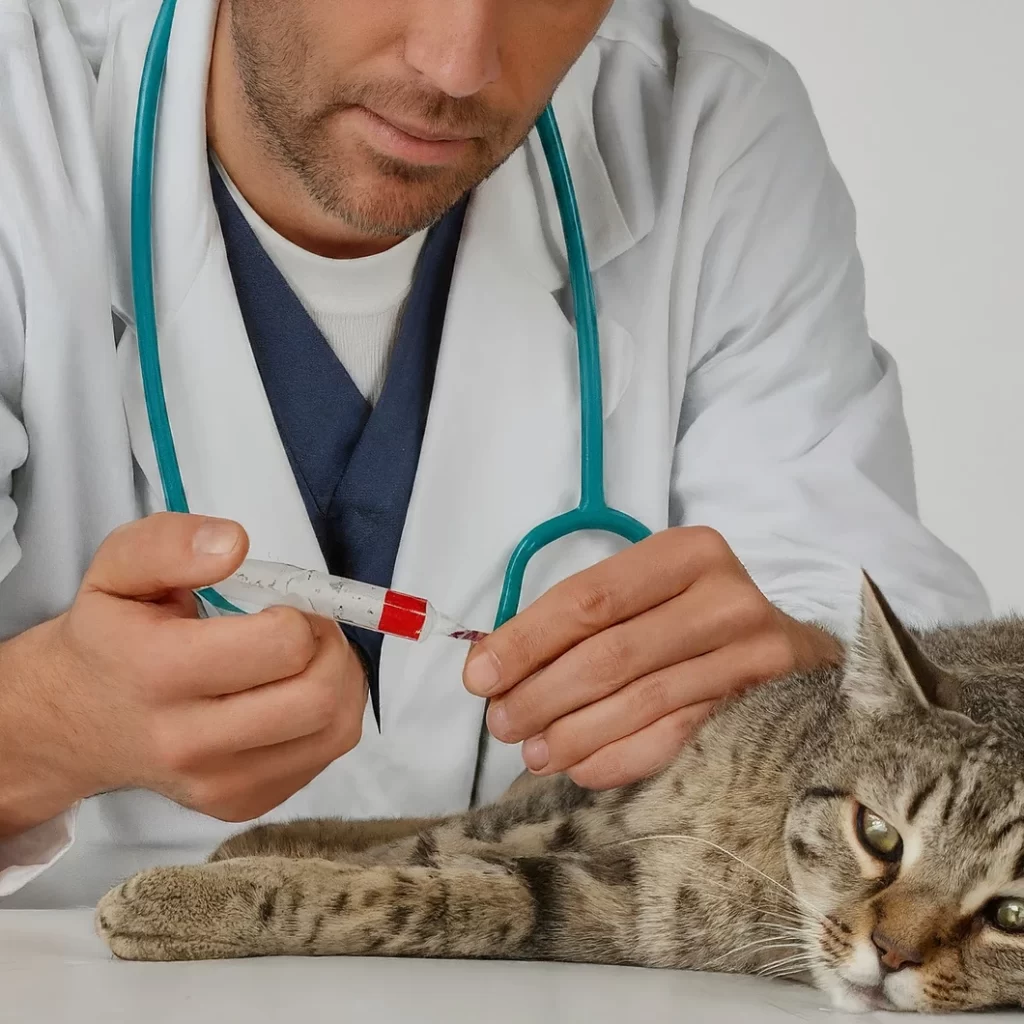
- Bloodwork may be helpful in identifying cats that are at risk of developing FIP, such as cats that are exposed to the FIP virus or that have other underlying diseases.
- Bloodwork can also be helpful in monitoring the progression of FIP in cats that have already been diagnosed.
- Newer blood tests, such as the FIP-Ab ELISA test, are being developed to improve the accuracy of bloodwork in diagnosing FIP. However, these tests are not yet widely available.
Feline Infectious Peritonitis (FIP) is a challenging disease to diagnose because feline coronaviruses are commonly found in the intestinal tract of many healthy cats[2]. A working diagnosis of FIP is typically made based on the cat’s clinical history and supportive laboratory data[2]. Although bloodwork isn’t the most reliable method of diagnosing FIP, it does provide a valuable piece of the puzzle.
The following are some indicators in bloodwork that would suggest a cat has FIP:
- Low albumin level: Albumin is a protein that helps to maintain fluid balance in the body. A low albumin level can be caused by a variety of factors, including FIP.
- High globulin level: Globulins are proteins that help to fight infection. A high globulin level can also be caused by a variety of factors, including FIP.
- Low A/G ratio: The A/G ratio is the ratio of albumin to globulin in the blood. A low A/G ratio is a common finding in FIP.
- High white blood cell count: A high white blood cell count is a sign of inflammation. Inflammation is a common finding in FIP.
- Anemia: Anemia is a condition in which the blood does not have enough red blood cells to carry oxygen to the body’s tissues. Anemia can be caused by a variety of factors, including FIP.
- Hypokalemia: Hypokalemia is a condition in which the blood does not have enough potassium. Hypokalemia can be caused by a variety of factors, including FIP.
- Hyperproteinemia: Hyperproteinemia is a condition in which the blood has too much protein. Hyperproteinemia can be caused by a variety of factors, including FIP.
- Hyperglobulinemia: Hyperglobulinemia is a condition in which the blood has too many globulins. Hyperglobulinemia can be caused by a variety of factors, including FIP.
- Abdominal fluid: Abdominal fluid is a collection of fluid in the abdomen. Abdominal fluid can be caused by a variety of factors, including FIP.
The albumin to globulin ratio (A/G ratio) can be an indicator of FIP in cats. An A/G ratio of less than 0.6 is highly diagnostic for an inflammatory process, nearly exclusively for FIP. A retrospective study found that the positive predictive value of an A/G ratio of less than 0.6 was 25% in a mid-western referral hospital population. If the total serum protein is 7.8 g/dL or greater and the A/G ratio is less than 0.6, FIP becomes a more likely diagnosis. However, it is important to note that the predictive value of the A/G ratio is not very high, and a proper diagnosis requires a multitude of diagnostics both to confirm FIP, as well as to rule out other conditions that share similar symptoms
Bloodwork is not very accurate in determining if a cat has FIP. The most common bloodwork indicators of FIP, such as hyperglobulinemia and lymphopenia, can also be caused by other diseases. Therefore, a definitive diagnosis of FIP cannot be made based on bloodwork alone.
One study found that a combination of three blood tests, including a low lymphocyte count, a high blood globulin level, and a positive coronavirus antibody test, had a 94% chance of detecting FIP in cats. However, even this combination of tests is not perfect, as there is still a 6% chance of a false negative result.
The most accurate way to diagnose FIP is through a biopsy of affected tissues. However, biopsies can be invasive and risky, and they are not always possible to obtain.
Another way to diagnose FIP is through a PCR test of abdominal fluid or other effusions. PCR tests are highly sensitive and specific for FIP, but they are not always available or affordable.
In general, bloodwork is not a reliable way to diagnose FIP. If your veterinarian suspects that your cat may have FIP, they may recommend additional tests, such as a biopsy or PCR test, to confirm the diagnosis.
Here are some additional things to keep in mind about bloodwork and FIP:
If you have any concerns about your cat’s health, please talk to your veterinarian. They can help you to interpret your cat’s bloodwork results and determine if any further testing or treatment is necessary.
Citations:
[1] https://www.ncbi.nlm.nih.gov/pmc/articles/PMC2748294/
[2] https://vcahospitals.com/know-your-pet/feline-infectious-peritonitis-testing
[3] https://fiptreatment.com/diagnosing-fip/
[4] https://fipslayer.com/reading-blood-tests/
[5] https://www.merckvetmanual.com/generalized-conditions/feline-infectious-peritonitis/overview-of-feline-infectious-peritonitis
[6] https://icatcare.org/advice/feline-infectious-peritonitis-fip/